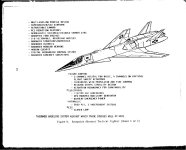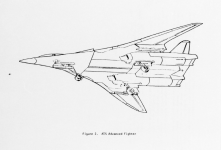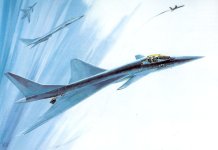Sundog
SOH-CM-2025
Sorry, no actual information on the design itself yet. NGAD has flown.
The article is mostly about how Roper wants the USAF to not sustain old designs, but buy new planes about every eight years. The money to pay for them would come from not having to keep old designs flying, which is very expensive. Also, because of our digital technology, we can design a lot faster and with better results much faster now. I think they are also developing the systems that go on board the aircraft separately now, and not as part of an individual program. The systems are becoming more "plug and play," so to speak.
I think this vehicle, or vehicles, were developed under a DARPA program started back in about 2015. I believe there were supposed to be two competing contractors developing for this contract. Most of the aerospace manufacturers have had research programs on rapid development and construction of aircraft going on for over a decade now. I know Boeing had their Black Diamond program and NG and LM had their own programs as well. I'm willing to bet there was a lot more additive manufacturing that went into the(se) prototype(s).
Edit: In a press conference, Roper adds only this: “All I can say is the NGAD [flight demonstrator] test flights have been amazing. Records have been broken. But I’ve been impressed at how well the digital technology transitions to the real world.”
Edit 2: I should note that this is most likely a demonstrator vehicle, not necessarily the actual replacement. It's hard to say at this point, since so much of the NGAD program is classified. It's not clear at this point if warrants an "X" for experimental or a "Y" for prototype. I lean toward the latter, based on what they're attempting to do technology wise with this program.
The article is mostly about how Roper wants the USAF to not sustain old designs, but buy new planes about every eight years. The money to pay for them would come from not having to keep old designs flying, which is very expensive. Also, because of our digital technology, we can design a lot faster and with better results much faster now. I think they are also developing the systems that go on board the aircraft separately now, and not as part of an individual program. The systems are becoming more "plug and play," so to speak.
I think this vehicle, or vehicles, were developed under a DARPA program started back in about 2015. I believe there were supposed to be two competing contractors developing for this contract. Most of the aerospace manufacturers have had research programs on rapid development and construction of aircraft going on for over a decade now. I know Boeing had their Black Diamond program and NG and LM had their own programs as well. I'm willing to bet there was a lot more additive manufacturing that went into the(se) prototype(s).
Edit: In a press conference, Roper adds only this: “All I can say is the NGAD [flight demonstrator] test flights have been amazing. Records have been broken. But I’ve been impressed at how well the digital technology transitions to the real world.”
Edit 2: I should note that this is most likely a demonstrator vehicle, not necessarily the actual replacement. It's hard to say at this point, since so much of the NGAD program is classified. It's not clear at this point if warrants an "X" for experimental or a "Y" for prototype. I lean toward the latter, based on what they're attempting to do technology wise with this program.







